Costa Rica no doubt has some of the most stunning beaches in the world, but many have powerful rip currents that can be very dangerous. In this post, we’ll give some background on beach safety in Costa Rica, help you identify rip currents, and give a list of safer swimming beaches.
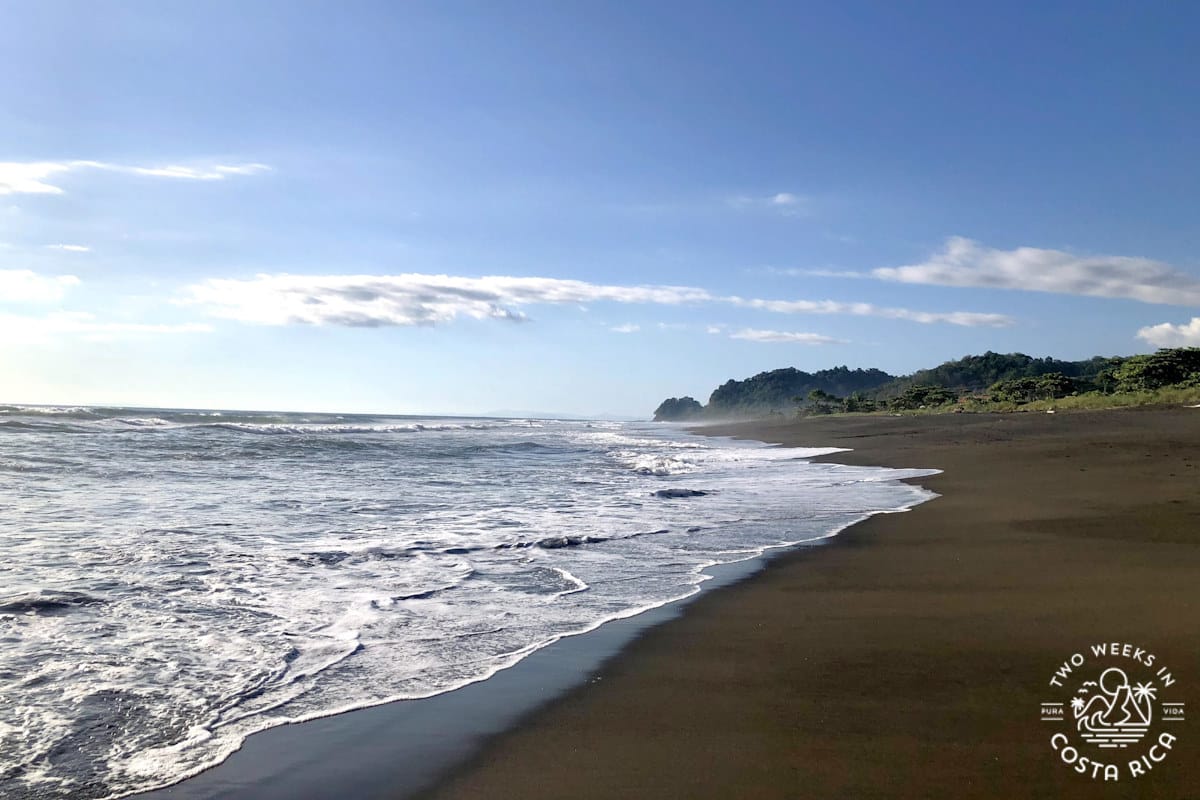
Overview
Costa Rica’s beaches vary a lot in terms of safety. Up and down the Pacific and Caribbean coast, you’ll find both beaches with relatively calm water and also many surfing beaches with powerful waves.
Some of the most popular beach destinations in the country like Jaco, Tamarindo, Dominical, Santa Teresa, and Nosara are surfing beaches with big waves and strong currents.
Lifeguards in Costa Rica
Most of Costa Rica’s beaches, unfortunately, do not have a lifeguard. The government doesn’t fund them in most areas, leaving it up to local communities.
You will find lifeguards on certain beaches, but the resources are limited. There may be only one or two for a long stretch of beach, or they may be responsible for multiple beaches in one area so can’t cover everywhere. These people do an amazing job, though. We often hear about successful rescues on the beaches near where we live.
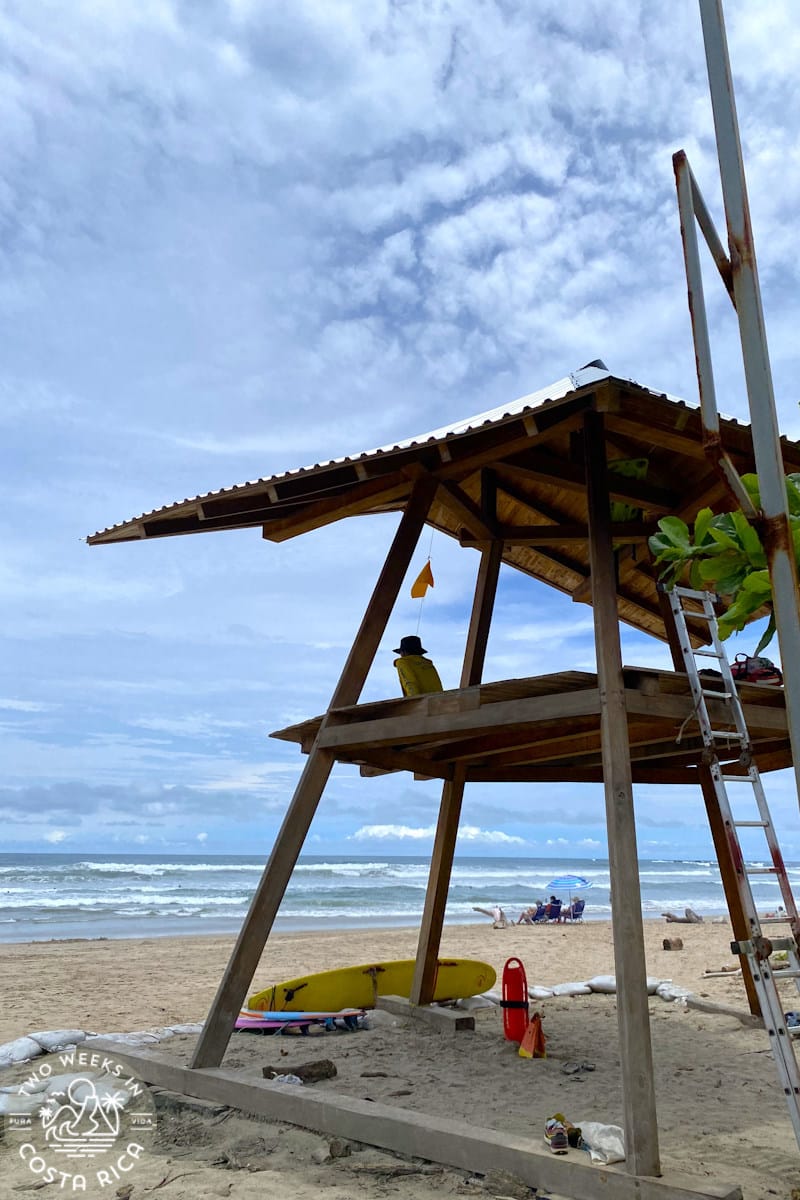
Every year in Costa Rica, both tourists and locals still sadly drown at the country’s beaches. Most of those deaths are because of rip currents that they didn’t realize were there.
Staying Safe at Costa Rica’s Beaches
First, always be mindful of signs warning about rip currents. We have been to hundreds of beaches in Costa Rica, and while not all dangerous beaches have these signs, many do.
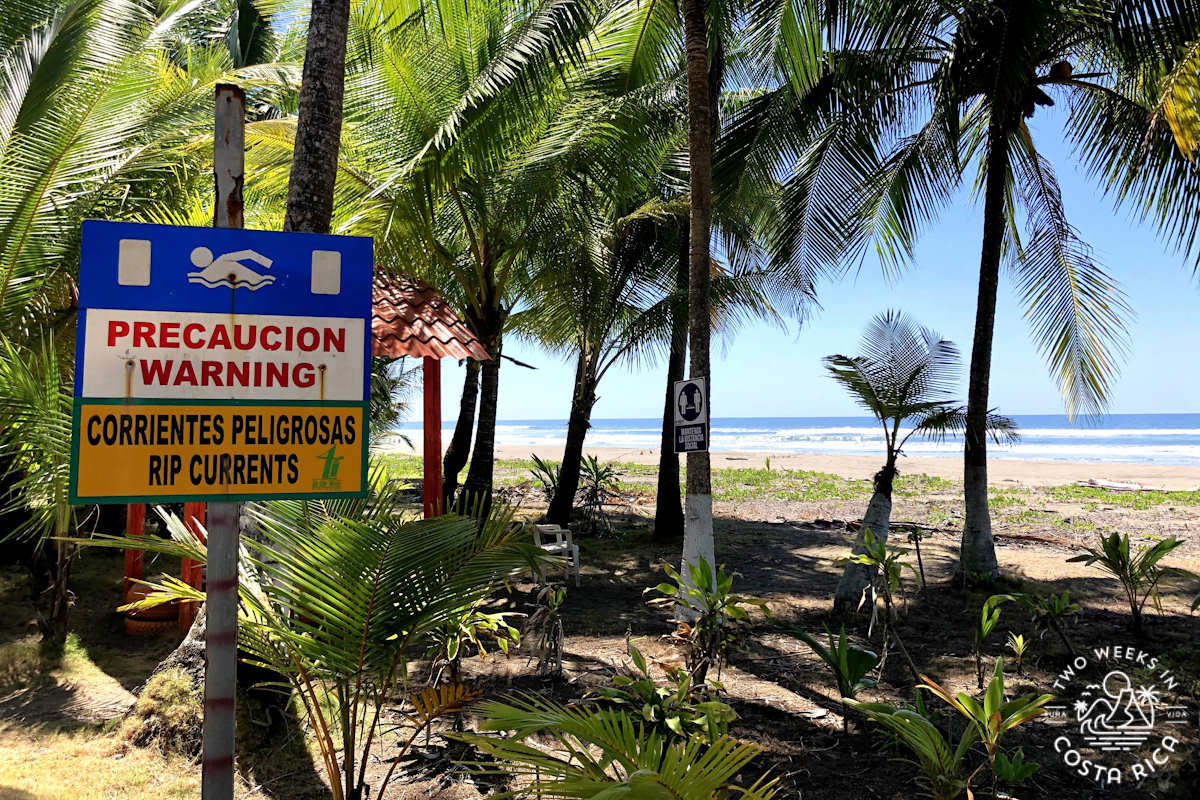
Also keep an eye out for flags placed on the beach, warning about dangerous ocean conditions. Lifeguards or the local municipality sometimes put these out. Red flags indicate dangerous conditions and you shouldn’t go in the water. Yellow flags mean that you should use extra caution. Note that many beaches do not have flags at all.
If a beach does have a lifeguard, it’s a good idea to swim near the lifeguard stand. If there’s no lifeguard, try to swim near other people and don’t isolate yourself. We often hear stories of how a nearby surfer or random beach goer helped pull someone out of a dangerous situation. It’s good to have others around!
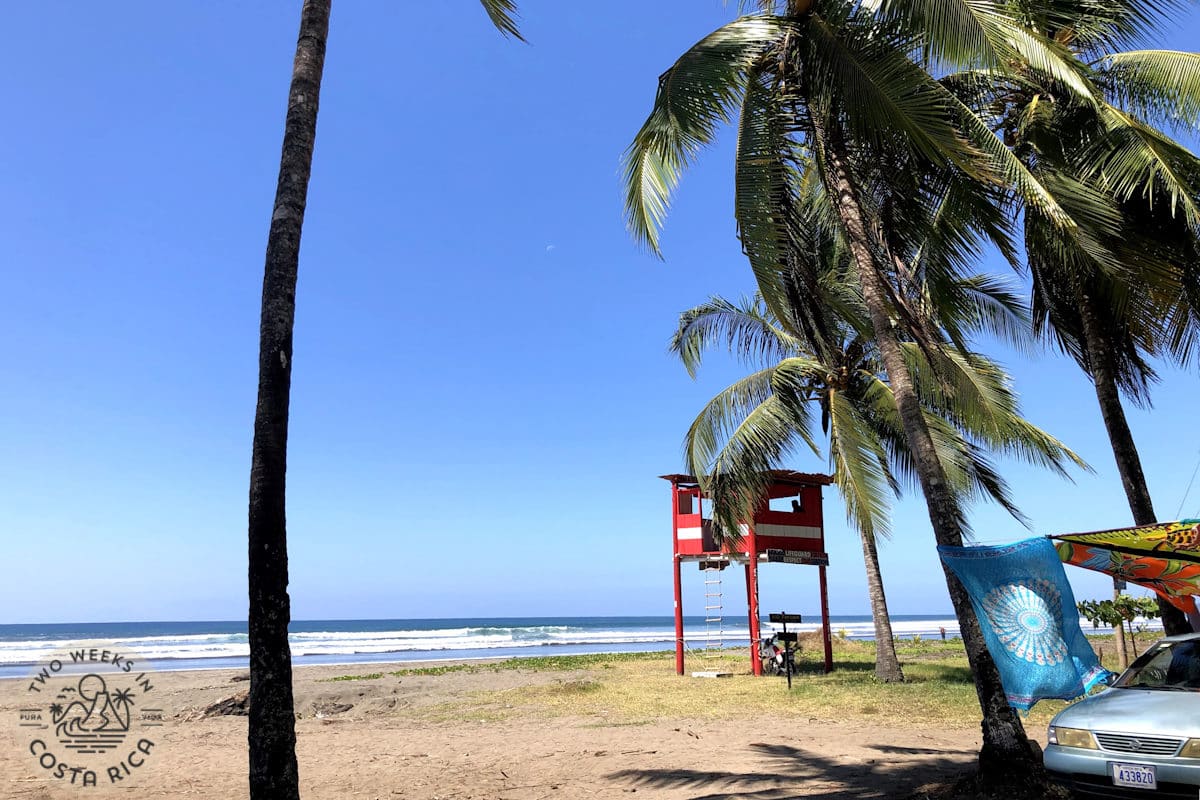
Finally, if you are nervous at all about current conditions, don’t go out deeper than your waist. You can still have a lot of fun wading or splashing in the shallow waves. That’s what our family does.
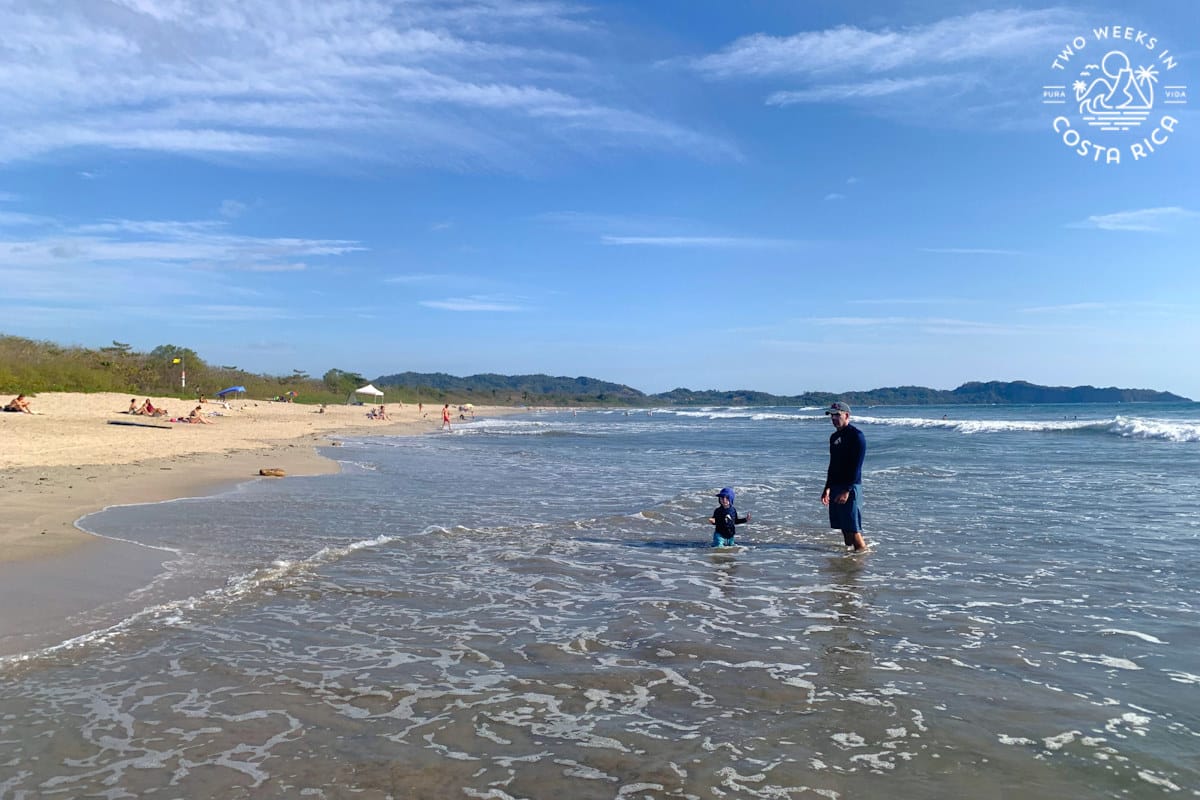
How to Recognize a Rip Current
A rip current is a powerful channel of water flowing away from shore that pulls you out to sea. Usually, people have no idea that they are swimming in an area with rip currents and are out too deep when they get in trouble. Here is what to look for.
- Different colored water (muddy or foamy) flowing away from shore
- Calm areas in breaking waves where other areas have whitecaps
- Lines of foam or debris
- Feeling a strong pull away from shore, even in knee-deep water
- Being swept parallel to the beach faster than normal
Rip currents can form quickly and change throughout the day. We have often found that they are the worst when the tide is changing.
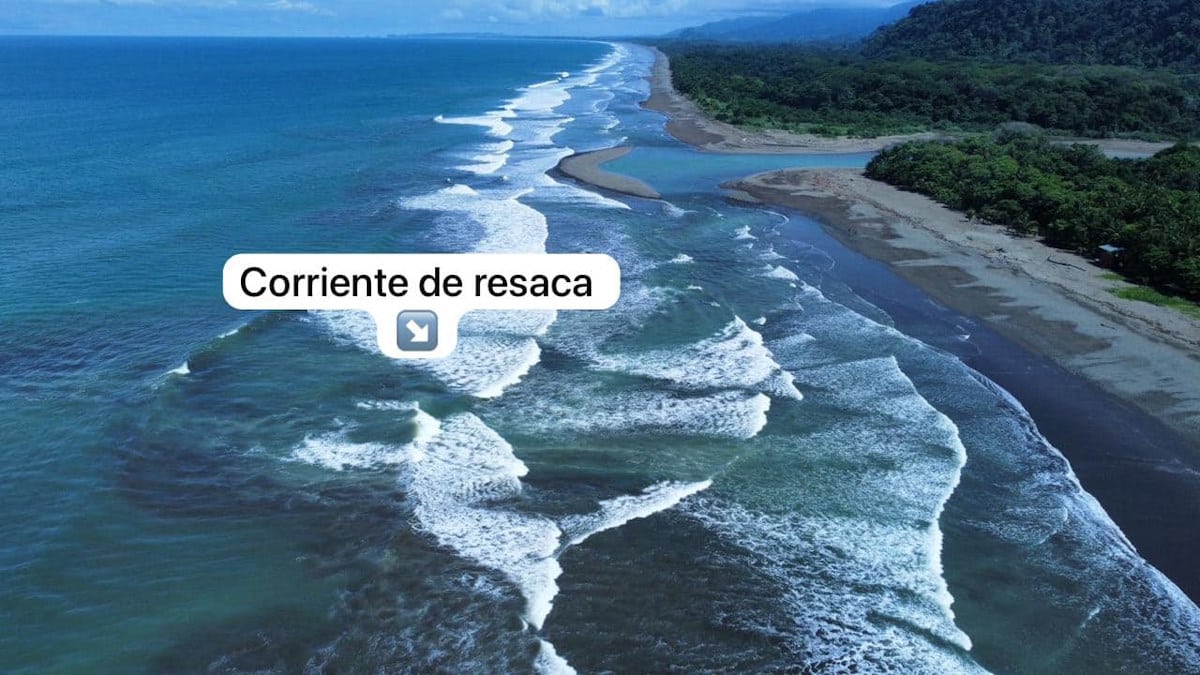
What to Do if Caught in a Rip Current
Try not to panic. Do your best to stay calm. Here’s what to do:
- DO NOT swim directly back to shore—you’ll exhaust yourself
- Swim parallel to the shore until you escape the current
- Once free, swim back to shore at a 45-degree angle
- If you can’t swim out, float and wave for help—the current weakens beyond the breakers
Remember: Rip currents pull you out, not under. Stay calm and work with the ocean.
Here is a diagram that explains more:
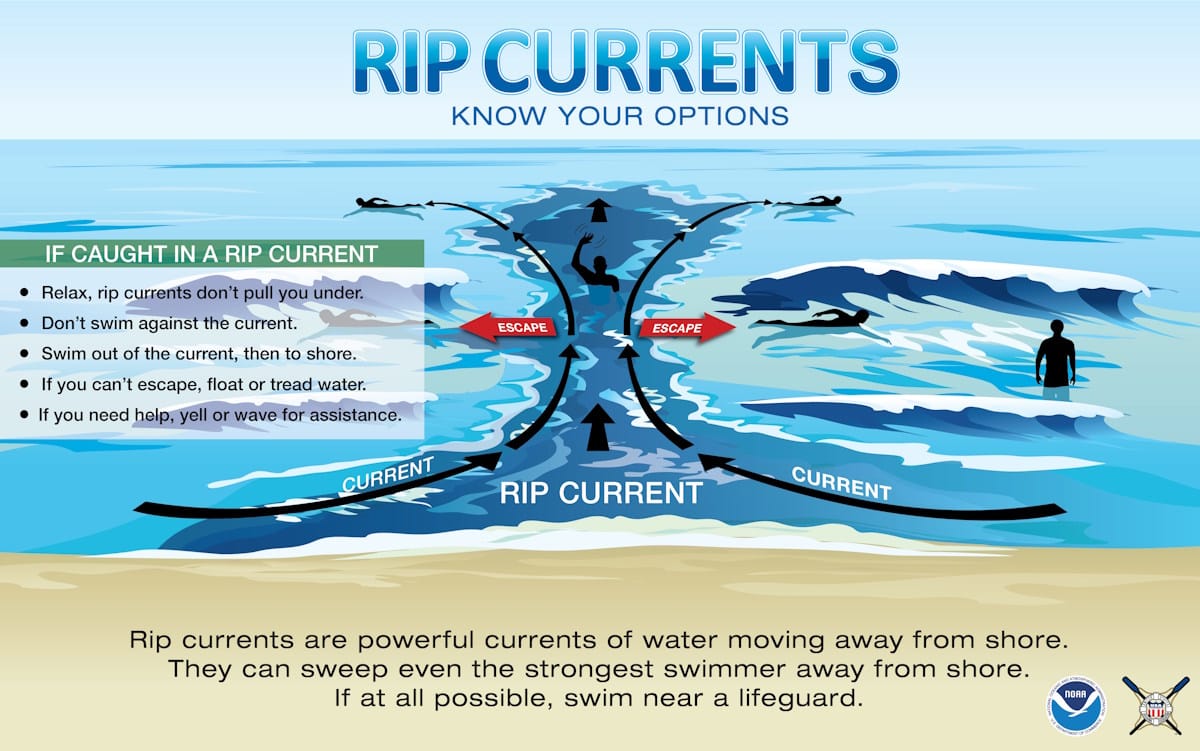
For more information on rip current safety, check out the U.S. Lifesaving Association’s rip current guide.
Safer Swimming Beaches
For safer swimming beaches in Costa Rica, these spots generally offer calmer water. **Always be sure to check current conditions on your visit.**
Guanacaste/Northern Pacific Coast: Playa Potrero, Playa Penca, Playa Hermosa (Guanacaste), Playa Panama, Playa Ocotal, Playa Danta & Playa Dantita, Playa Conchal, Playa Samara, Playa Carrillo
Central Pacific Coast: Playa Mantas and Playa Blanca (north of Jaco), Playa Manuel Antonio (inside the national park), Playa Biesanz
Southern Pacific Coast: Puerto Jimenez’s main beach
Caribbean Coast: Playa Negra near downtown Puerto Viejo (close to town/El Barco)
Even at these “safer” beaches, conditions change quickly with weather, tides, and swells.
If you’re traveling to Costa Rica with kids, also be sure to check out our post on the Best Beaches in Costa Rica for Families.
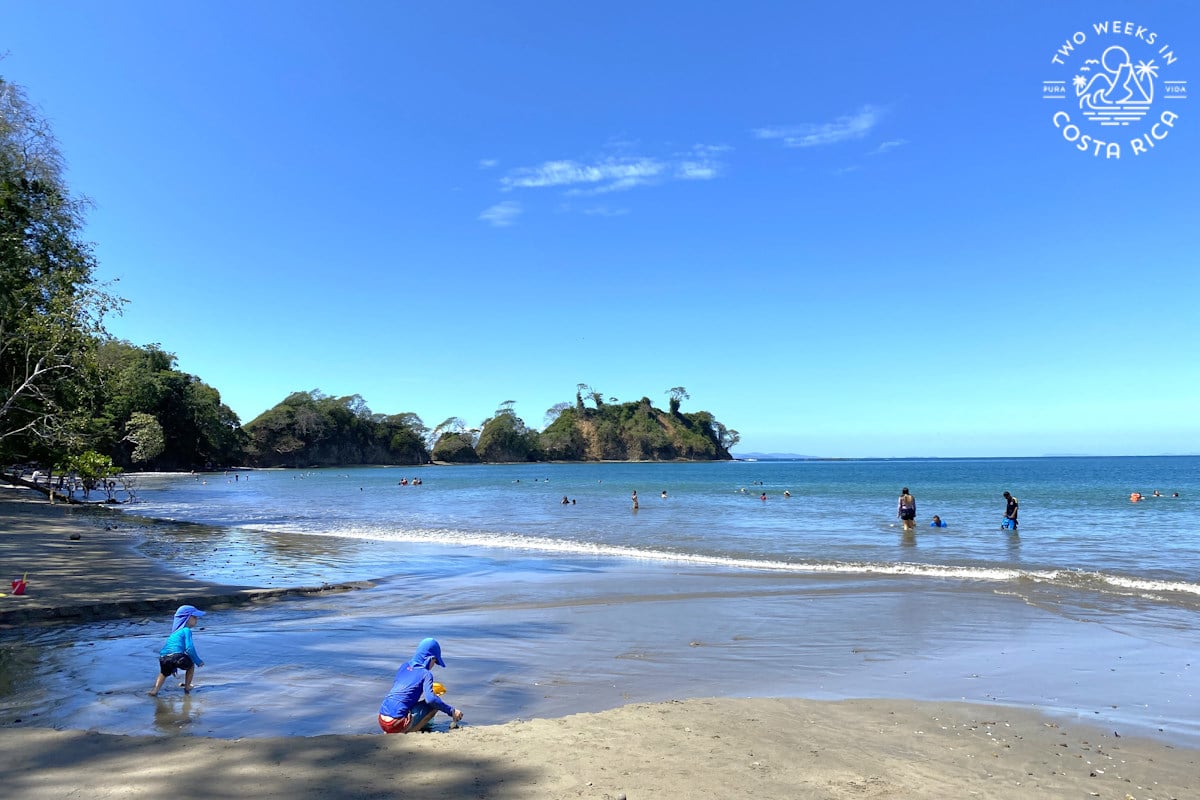
Conclusion
Costa Rica’s beaches are definitely worth experiencing, but respecting the ocean’s power is essential to ensuring a safe visit. Always be mindful about current conditions, ask locals about beach safety, and never swim alone. A little caution ensures your Costa Rica beach memories are nothing but positive.
Have a question about beach safety in Costa Rica? Ask us below.
Looking for more information to plan your trip? Check out these posts:
Safety Tips for Your Trip to Costa Rica: Practical safety tips, including keeping your valuables secure and staying safe while driving and at vacation rentals.
Costa Rica’s Water: Learn about drinking water safety in different regions of Costa Rica.
Costa Rica and Mosquitoes: Get information on mosquito-borne diseases and tips on avoiding bites.
Health and Safety: Browse our Health and Safety articles for more information on staying safe during your trip.
Practical Travel: Get information on handling money, weather, packing, and more.



